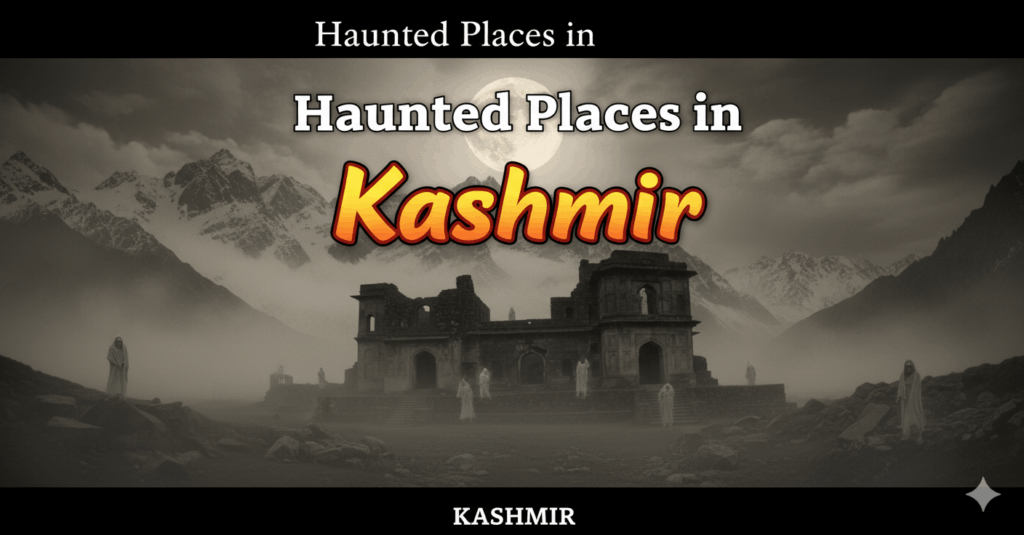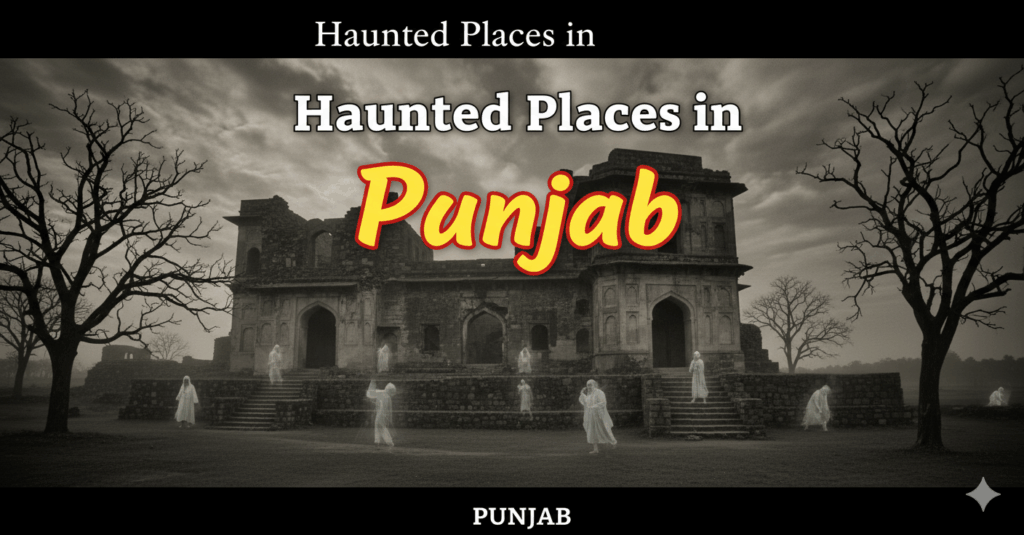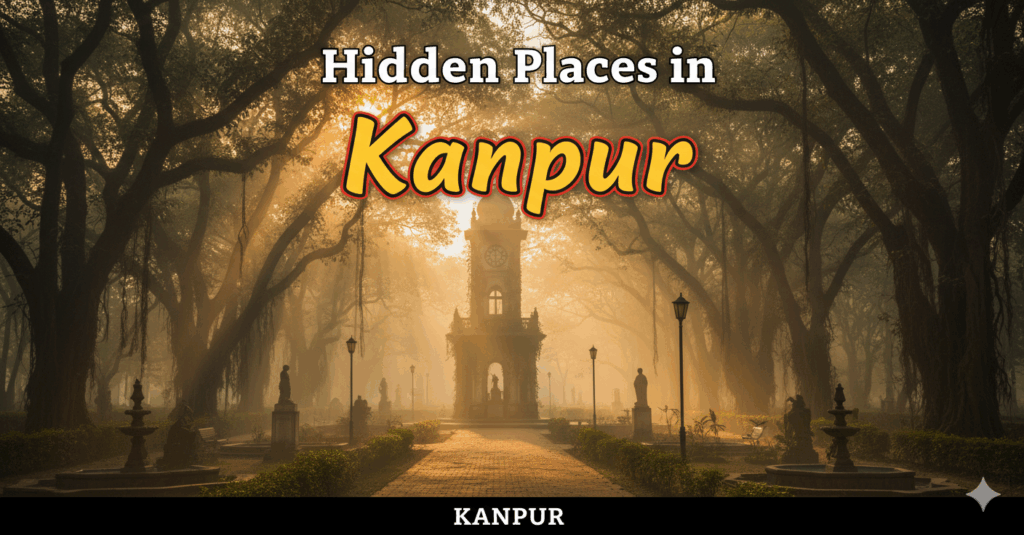Known as the “Mini Switzerland of India,” Chopta stands as one of Uttarakhand’s most spectacular trekking destinations, offering breathtaking Himalayan views and pristine alpine meadows. The chopta chandrashila trek best time to visit varies significantly with seasons, each offering unique experiences from snow-laden winter wonderlands to vibrant monsoon landscapes. Understanding optimal timing ensures trekkers experience the best weather conditions, clearest mountain views, and safest trail conditions for this magnificent high-altitude adventure.
Located in the Kedarnath Wildlife Sanctuary, Chopta serves as the base camp for the famous Chandrashila trek, combining spiritual significance with natural beauty. The trek to Chandrashila summit via Tungnath temple creates an unforgettable journey through diverse ecosystems, ancient pilgrimage routes, and some of the most spectacular mountain vistas in the Indian Himalayas.
Table of Contents
Chopta: The Mini Switzerland of Uttarakhand
Chopta is a small region of meadows and evergreen forest area, part of Kedarnath Wildlife Sanctuary located in Uttarakhand state, India. This pristine destination serves as the base for trekking to Tungnath, the third temple of Panch Kedar, and the famous Chandrashila summit.
| Aspect | Details |
|---|---|
| Location | Rudraprayag District, Uttarakhand |
| Chopta Height | 2,608 meters (8,556 feet) above sea level |
| Alternative Height | 2,709 meters (8,888 feet) at village center |
| Nickname | Mini Switzerland of India |
| Distance from Rishikesh | 162 kilometers (101 miles) |
| Distance from Delhi | Approximately 450 kilometers (280 miles) |
| Distance from Ukhimath | 45 kilometers |
| Tungnath Distance | 3.5 kilometers (2.2 miles) from Chopta |
| Chandrashila Summit | 4,000 meters (13,123 feet), 1.5 km from Tungnath |
| Wildlife Sanctuary | Kedarnath Wildlife Sanctuary |
| Peak Views | Trishul, Nanda Devi, Chaukhamba (41 Himalayan peaks visible) |
Chopta is surrounded by forests of pine, deodar, and rhododendron, rich in flora and fauna including rare species of birds and musk deer. The region offers spectacular views of the imposing Himalayan range and serves as an unspoiled natural destination in the lap of the Uttarakhand Himalayas.
Chopta Chandrashila Trek Best Time to Visit: Seasonal Analysis

Understanding the chopta chandrashila trek best time to visit requires careful consideration of weather patterns, trail conditions, and personal preferences for mountain experiences. Each season transforms the landscape dramatically, offering distinct advantages and challenges for trekkers.
Seasonal Overview
| Season | Months | Temperature Range | Chopta Trek Conditions | Snow Presence | Difficulty Level | Rating |
|---|---|---|---|---|---|---|
| Summer | Apr-Jun | 15-25°C | Excellent visibility, clear trails | Minimal | Moderate | ⭐⭐⭐⭐⭐ |
| Monsoon | Jul-Sep | 10-20°C | Challenging, lush landscapes | None | High | ⭐⭐☆☆☆ |
| Post-Monsoon | Oct-Nov | 5-15°C | Perfect weather, clear views | None to light | Moderate | ⭐⭐⭐⭐⭐ |
| Winter | Dec-Mar | -5 to 10°C | Snow trekking, limited access | Heavy | Very High | ⭐⭐⭐⭐☆ |
Summer Season (April to June): Peak Trekking Paradise
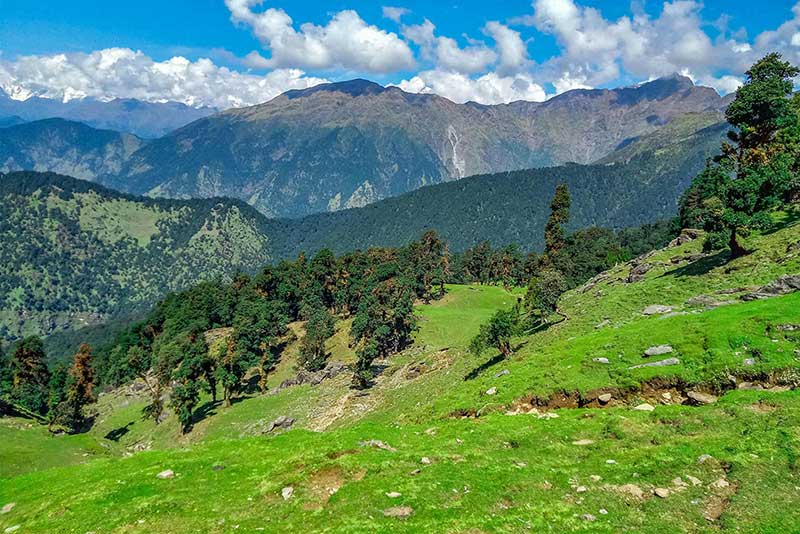
Summer emerges as the most popular chopta chandrashila trek best time to visit for first-time trekkers and families seeking comfortable mountain experiences. According to Wikipedia sources, the best time to visit Chopta is from April to November, with summer months offering ideal conditions for trekking activities.
Summer Advantages:
- Pleasant daytime temperatures ranging from 10-30°C ideal for extended trekking
- Clear mountain visibility during morning hours before afternoon clouds
- Fully accessible trails with minimal technical challenges
- Abundant accommodation options and local guide availability
- Vibrant alpine flora including rhododendrons in full bloom
The summer season showcases Chopta’s nickname as “Mini Switzerland” most prominently, with emerald meadows stretching endlessly against dramatic mountain backdrops. However, summertime does not offer clear views of Himalayas from June to August due to cloudy weather, when all peaks are covered in clouds.
Peak Season Considerations:
- Higher tourist numbers, especially during May-June holidays
- Advanced booking recommended for accommodations and chopta trekking package deals
- Increased costs during peak demand periods
- Crowded trails during weekends and festival seasons
Post-Monsoon Season (October to November): The Golden Window
Many experienced trekkers consider post-monsoon the absolute chopta chandrashila trek best time to visit due to optimal weather conditions and spectacular visibility. Fresh mountain air and crystal-clear skies create perfect conditions for mountain photography and summit attempts.
Post-Monsoon Excellence:
- Exceptional mountain visibility with snow-capped peaks clearly visible
- Comfortable trekking temperatures ranging from 5-15°C
- Dry trail conditions with minimal mud or slippery sections
- Moderate tourist numbers providing more intimate mountain experiences
- Perfect conditions for chopta trip planning with reliable weather patterns
The post-monsoon period offers the most reliable weather windows for completing the full Chandrashila circuit. Morning frost creates magical landscapes while afternoon temperatures remain comfortable for extended outdoor activities.
Winter Season (December to March): Snow Trekking Adventure

Winter transforms Chopta into a snow-covered wonderland, attracting adventure enthusiasts seeking challenging high-altitude experiences. According to verified sources, Chopta witnesses snowfall from November to March with temperatures between -15°C to 15°C, creating a 4-7 foot thick layer of snow by January.
Winter Trekking Experience:
- Complete snow coverage from December to March transforming landscape
- Tungnath temple and Chandrashila are covered with snow during this period
- Clear skies providing excellent visibility of all mountain peaks during winter
- Technical trekking requiring proper winter gear and experience
- Some routes to Chopta may be blocked due to heavy snowfall
- Alternative route available via Deoria Tal (10-12 km trek from Saari Village)
Winter trekking at chopta height becomes extremely challenging but offers unparalleled snow experiences. Many trekkers combine their mountain adventures with other destinations through Rajasthan tour packages from Mumbai for diverse cultural experiences. The region is fully covered with snow during winters, making it popular among adventure seekers despite accessibility challenges.
Monsoon Season (July to October): For the Adventurous
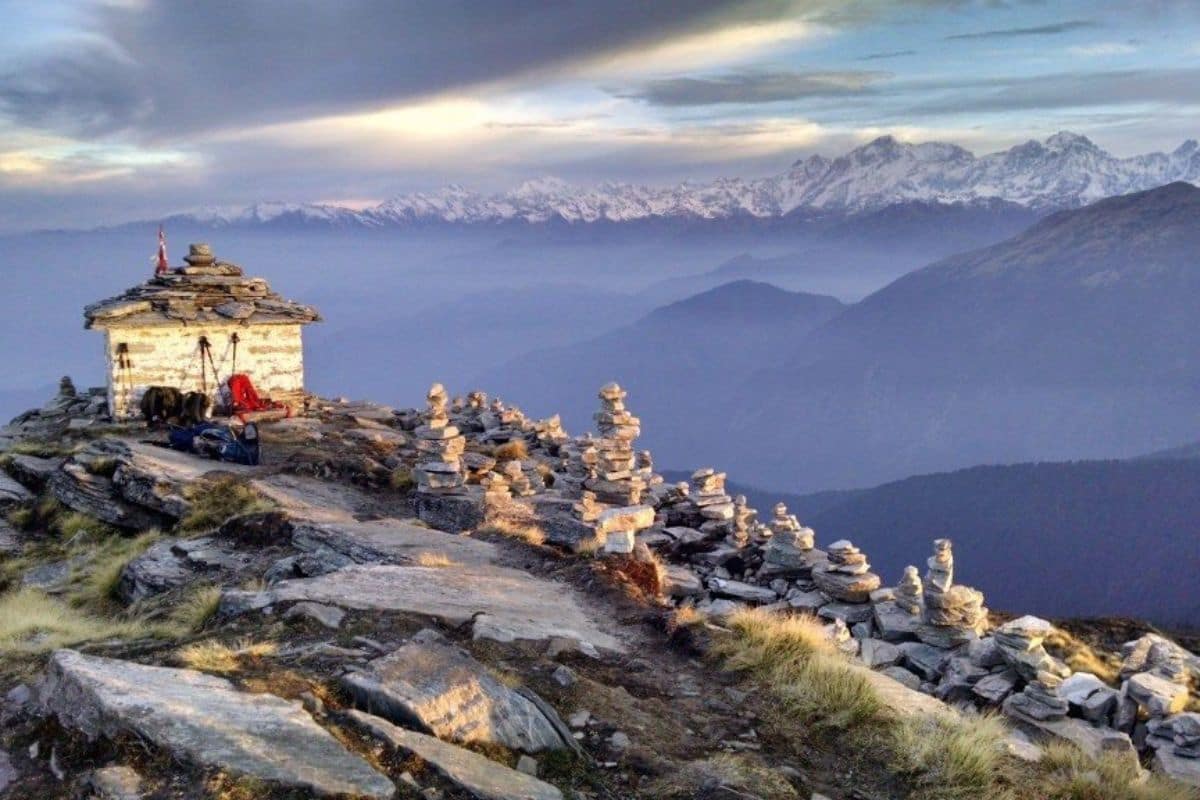
According to Wikipedia sources, monsoon season in Chopta starts from July and ends in October, presenting challenging conditions suitable only for experienced trekkers comfortable with unpredictable weather and technical trail conditions.
Monsoon Characteristics:
- Heavy rainfall creating slippery and potentially dangerous trail conditions
- Limited visibility due to cloud cover and frequent weather changes
- Lush green landscapes with spectacular waterfalls and streams
- Significantly reduced tourist numbers providing solitude
- High risk of landslides and trail blockages requiring caution
The monsoon period transforms Chopta’s forests and meadows into vibrant green landscapes, though trekking becomes considerably more challenging during this season.
How to Reach Chopta: Complete Transportation Guide
Planning how to reach chopta requires understanding multiple transportation options and route combinations that connect this remote Himalayan destination with major cities and transportation hubs.
Primary Access Routes
Multiple transportation routes connect Chopta with major cities and transportation hubs across India. Understanding these route options helps travelers choose the most convenient path based on their starting location and preferences.
Via Rishikesh (Most Popular Route):
- Distance: 162 kilometers from Rishikech to Chopta (verified Wikipedia data)
- Travel Time: 6-7 hours by road including breaks
- Route Options:
- Route 1: Rishikesh → Rudraprayag → Kund → Ukhimath → Chopta
- Route 2: Rishikesh → Rudraprayag → Karnprayag → Chamoli → Gopeshwar → Mandal → Chopta
- Road Conditions: Chopta is accessible as it’s situated on the road connecting Gopeshwar with Guptkashi
Via Delhi:
- Distance: Approximately 450 kilometers (280 miles) according to Wikipedia
- Travel Time: 10-12 hours including breaks and stops
- Route: Delhi → Haridwar → Rishikesh → Rudraprayag → Ukhimath → Chopta
From Ukhimath:
- Distance: 45 kilometers from Ukhimath to Chopta
- Travel Time: 1.5-2 hours on mountain roads
- Significance: Ukhimath serves as the winter seat of Kedarnath temple
Transportation Options
Various transportation methods are available for reaching Chopta, each offering different advantages in terms of cost, convenience, and travel experience for different types of travelers.
Self-Drive Adventures: Self-driving to Chopta offers maximum flexibility for chopta trip planning with opportunities for scenic stops and photography. Well-maintained roads until Ukhimath make the journey accessible for experienced mountain drivers, though the final stretch to Chopta requires careful navigation of narrow mountain roads.
Public Transportation: State transport buses operate from Rishikesh and Haridwar to Ukhimath, with shared taxis covering the final stretch to Chopta. This economical option requires more time and planning but provides authentic local travel experiences.
Organized Transportation: Many chopta trekking package providers include transportation from major cities, offering convenience and local expertise. Professional drivers familiar with mountain conditions ensure safer travel, especially during challenging weather periods. Adventure seekers often extend their Himalayan experiences by exploring Udaipur tour packages from Mumbai for comprehensive cultural tourism.
Chopta Height and Acclimatization Guidelines
The chopta height of 2,608 meters (8,556 feet) according to Wikipedia, with some sources indicating 2,709 meters (8,888 feet) at the village center, places it in the moderate altitude category where some visitors may experience mild altitude effects. Understanding proper acclimatization techniques ensures comfortable adjustment to mountain conditions.
Altitude Considerations
Physical Preparation: The chopta height in feet of approximately 8,556-8,888 feet requires moderate fitness levels and gradual altitude adjustment for optimal comfort. Most trekkers adapt quickly to this elevation, though proper hydration and gradual activity increase remain important for preventing altitude-related discomfort.
Summit Heights:
- Tungnath Temple: Located at 3,680 meters (12,073 feet)
- Chandrashila Peak: Rising to 4,090 meters (13,419 feet) according to verified sources
- Distance: Chandrashila is 1.5 kilometers from Tungnath, only 1 km but relatively steep terrain
Acclimatization Tips:
- Arrive in Chopta by early afternoon to allow adjustment time
- Avoid strenuous activity on arrival day
- Maintain proper hydration levels throughout stay
- Consider spending extra day for altitude adjustment before summit attempts
- Monitor for symptoms of altitude sickness despite moderate elevation
Health Precautions:
- Carry basic altitude sickness medication
- Avoid alcohol consumption on arrival
- Eat light, easily digestible meals initially
- Get adequate rest before attempting summit treks
Chopta Itinerary: Complete Trek Planning Guide
A well-structured chopta itinerary balances acclimatization requirements with maximum mountain experiences while considering seasonal conditions and individual fitness levels.
3-Day Classic Chopta Experience
Day 1: Arrival and Base Setup Morning arrival in Chopta allows time for altitude adjustment and basic exploration of the immediate area. Afternoon activities include short walks around Chopta meadows, photography sessions, and preparation for the main trek. Evening camp setup or accommodation check-in provides opportunity for rest and early sleep preparation.
Day 2: Tungnath-Chandrashila Summit Trek Early morning departure (6:00 AM) for the classic trek to Tungnath temple followed by Chandrashila summit. According to Wikipedia, the well-marked trail covers 3.5 kilometers from Chopta to Tungnath temple, and an additional 1.5 kilometers to Chandrashila peak. The best time to start the trek is in the morning as afternoon clouds and rain can obscure the beautiful 360-degree view of the entire Himalayan valley from the peak. Return journey allows afternoon rest and celebration of summit achievement.
Day 3: Exploration and Departure Morning activities include optional local walks, souvenir shopping, and preparation for departure. Alternative activities may include visits to nearby viewpoints or extended photography sessions before returning to base destinations.
Extended Itinerary with Deoria Tal: For a more comprehensive chopta itinerary, consider the popular multi-day trek route:
- Day 1: Kund to Deoriatal (3-5 hours trek) – Starting at Kund town situated at 1,350m, approximately 200km from Haridwar
- Day 2: Deoriatal to Chopta (4-5 hours trek)
- Day 3: Chopta to Chandrashila Peak via Tungnath Temple and back (4-5 hours trek)
- Day 4: Return journey from Chopta to Kund
Alternative Winter Route: During heavy snowfall when some routes are blocked, an alternative route to Chopta is available from Deoria Tal, which involves a 10-12 kilometer trek starting from Saari Village.
Chopta Trekking Package Options and Planning
Various chopta trekking package options cater to different experience levels, time constraints, and budget considerations while ensuring safe and memorable mountain experiences.
Package Categories
Different trekking packages cater to varying budget requirements and comfort preferences, ensuring options are available for all types of mountain enthusiasts seeking Chopta adventures.
Budget Packages (₹3,000-5,000 per person): Basic accommodation in local guesthouses or camping arrangements with simple meal provisions and local guide services. These packages focus on essential trekking experiences while maintaining affordability for budget-conscious travelers.
Standard Packages (₹5,000-8,000 per person): Comfortable accommodation options with better meals, experienced guides, and additional services including transportation arrangements and basic equipment provision. Standard packages balance comfort with value for most trekkers. Many visitors combine their mountain trekking with other regional attractions through Gujarat tour packages from Mumbai for diverse travel experiences.
Premium Packages (₹8,000-12,000 per person): Luxury camping or premium accommodation with gourmet meals, expert guides, comprehensive equipment provision, and additional services including photography assistance and extended activities.
Package Inclusions
Understanding what services and facilities are typically included in different package types helps travelers make informed decisions and avoid unexpected expenses during their trek.
Typical Inclusions:
- Accommodation arrangements (camping or guesthouse)
- All meals during trek period
- Experienced local guide services
- Basic trekking equipment (if required)
- Forest permits and entry fees
- Emergency support and first aid
Transportation Options: Many packages offer transportation from major cities, though self-drive options remain popular for flexibility. Chopta trip planning should consider transportation preferences and group size requirements.
Essential Preparation and Packing Guidelines
Successful Chopta Chandrashila trekking requires appropriate preparation considering seasonal conditions, chopta height challenges, and multi-day mountain exposure.
Seasonal Packing Requirements
Appropriate gear selection varies significantly based on the season of visit, with each period requiring specific equipment to ensure safety and comfort during mountain conditions.
Summer Season Essentials:
- Lightweight trekking shoes with good grip
- Layered clothing for temperature variations
- Sun protection including hat, sunglasses, and sunscreen
- Rain protection for unexpected weather changes
- Warm layers for early morning and evening temperatures
Winter Season Requirements:
- Insulated winter boots suitable for snow conditions
- Multiple insulation layers including down jacket
- Waterproof outer shell for snow protection
- Warm accessories including gloves, hat, and neck protection
- Emergency shelter and additional food supplies
Technical Equipment:
- Reliable headlamp with extra batteries
- Trekking poles for stability and support
- First aid kit with altitude sickness medication
- Water bottles or hydration system
- Emergency whistle and basic navigation tools
Physical Preparation
Adequate fitness preparation significantly enhances the trekking experience and reduces the risk of exhaustion or injury during the challenging mountain terrain of the Chandrashila trek.
Fitness Requirements: The trek to Chandrashila summit requires moderate fitness levels with ability to walk 5-6 hours on mountain terrain. Regular cardio exercise and leg strengthening activities provide optimal preparation for the physical demands of high-altitude trekking.
Training Recommendations:
- Daily walking or hiking practice for 2-3 weeks prior
- Stair climbing exercises for leg strength development
- Basic flexibility and balance training
- Gradual increase in exercise intensity
- Practice with loaded backpack for gear familiarity
Wildlife and Natural Heritage
Chopta’s location within Kedarnath Wildlife Sanctuary provides opportunities for wildlife observation and nature photography alongside trekking activities.
Flora and Fauna
Alpine Wildlife: According to Wikipedia, Chopta is rich in flora and fauna, including rare species of birds and musk deer. The region’s location within Kedarnath Wildlife Sanctuary provides excellent opportunities for wildlife observation, particularly for bird watchers due to the abundance of Himalayan bird species.
Botanical Diversity: Chopta village is surrounded by forests of pine, deodar, and rhododendron trees. The area includes temperate and alpine trees found in abundance, with oak, pine, and burans (rhododendron) among other Himalayan species occupying major portions of the region. The trek passes through dense forests and grassland patches (Bugyal/Meadows).
Notable Wildlife Species:
- Himalayan monal bird (state bird of Uttarakhand)
- Musk deer
- Pika mouse
- Snow partridge
- Various rare Himalayan bird species ideal for photography
Conservation Significance: The region’s status as part of Kedarnath Wildlife Sanctuary ensures protection of its diverse ecosystem and provides visitors with opportunities to observe Himalayan wildlife in their natural habitat.
Safety Considerations and Emergency Preparedness
Mountain trekking at chopta height requires comprehensive safety planning and emergency preparedness for various potential challenges.
Risk Assessment
Comprehensive understanding of potential mountain hazards and safety challenges helps trekkers prepare adequately and make informed decisions during their Chopta adventure.
Weather-Related Risks: Mountain weather changes rapidly, requiring constant monitoring and flexible planning. Sudden storms, temperature drops, and visibility changes present primary safety concerns requiring appropriate preparation and response strategies.
Altitude and Physical Challenges: While moderate, the chopta height in feet can affect some individuals, requiring awareness of altitude sickness symptoms and appropriate response measures. Physical challenges include terrain difficulty, fatigue management, and injury prevention.
Emergency Protocols:
- Comprehensive first aid training and equipment
- Communication devices for emergency contact
- Evacuation planning and rescue procedures
- Local emergency contact information
- Travel insurance covering high-altitude activities
Conclusion
The chopta chandrashila trek best time to visit ultimately depends on individual preferences for weather conditions, crowd levels, and adventure intensity. Summer and post-monsoon seasons offer optimal conditions for most trekkers, providing excellent weather, clear views, and accessible trail conditions. Winter season attracts advanced trekkers seeking snow experiences, while monsoon season suits only the most experienced mountain enthusiasts.
Understanding seasonal variations, proper preparation requirements, and safety considerations ensures memorable and successful chopta trip experiences. The combination of spectacular mountain views, spiritual significance, and accessible trekking makes Chopta an ideal destination for both novice and experienced trekkers seeking authentic Himalayan adventures. You can visit us at VDP Travels, Neighbourhood Complex, F- 5, near SBI Bank, Sector 4, Nerul, Navi Mumbai, Mumbai, Maharashtra 400706. For comprehensive Chopta Chandrashila trek packages with expert guides and complete mountain adventure experiences, call +91 99675 18405, or visit VDP Travels.
Chopta Chandrashila Trek Best Time to Visit – FAQs
What is the best time to visit Chopta for beginners?
April to June offers ideal conditions for beginners with pleasant temperatures (15-25°C), clear trails, and excellent visibility for safe trekking experiences.
How difficult is the Chopta Chandrashila trek?
The trek is moderate difficulty covering 5km total distance with gradual ascent. Most trekkers with basic fitness complete it comfortably in 6-8 hours.
What is the height of Chopta and Chandrashila?
Chopta sits at 8,790 feet elevation while Chandrashila summit reaches 13,020 feet, providing spectacular Himalayan panoramic views.
Is there snow in Chopta during winter?
Yes, December to March brings heavy snowfall transforming Chopta into winter wonderland, though trekking becomes challenging and requires experience.
How to reach Chopta from Delhi?
Travel Delhi to Rishikesh (240km) then Rishikesh to Chopta (220km) by road. Total journey takes 10-12 hours including breaks.
What should I pack for Chopta trek?
Essential items include layered clothing, trekking shoes, rain gear, warm layers, headlamp, first aid kit, and water bottles for safe trekking.
Are there accommodation options in Chopta?
Yes, options include camping, guesthouses, and eco-lodges ranging from ₹500-3000 per night depending on season and facilities.
Do I need permits for Chopta trek?
Forest entry permits are required for Kedarnath Wildlife Sanctuary. Most trekking packages include permit arrangements in their services.
What is the distance from Chopta to Chandrashila?
The trek covers 3.5km to Tungnath temple plus 1.5km to Chandrashila summit, totaling 5km one-way with moderate difficulty level.
Can Chopta be visited year-round?
Yes, though winter months require experience with snow conditions. Summer and post-monsoon offer best accessibility and weather conditions for most visitors


